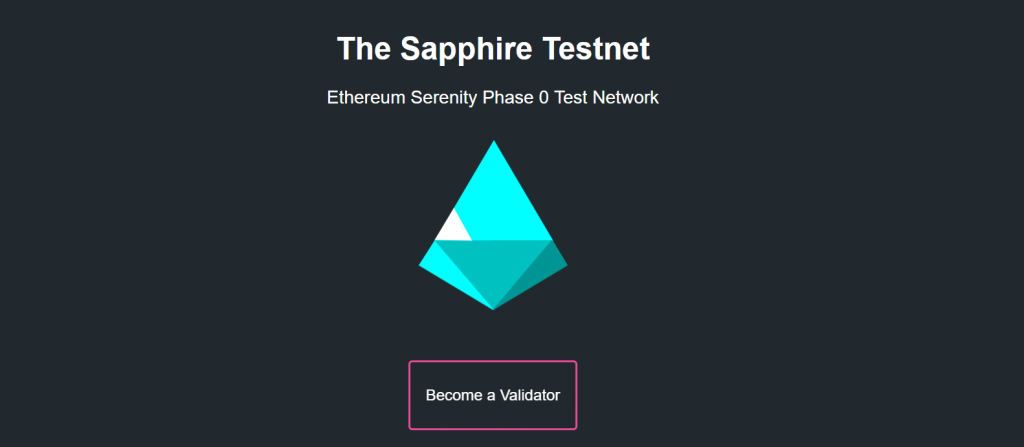One of the most important features of Ethereum 2.0, which will be introduced in 2020, will be the operation of this network based on the Proof-of-Stake algorithm. The stacking will perform the same function as mining in Ethereum 1.0, and it will give the owners of the broadcast (ETH) the opportunity to profit from their investments.
Steaking will have a number of advantages over conventional mining (Proof-of-Work) : this is energy efficiency and a reduction in the inflation rate of this cryptocurrency. In general, stacking should be more secure and decentralized than regular mining (although there is something to argue about). In any case, it will be a huge change for the network of the ethereum and its users.
Stacking Basics
To start stacking in the Ethereum 2.0 network , you will need to start the validator node and block your broadcast in the deposit. This will allow you to participate in the creation of blocks: validators will be randomly selected from the entire network of the ethirium, who will be able to vote for new blocks. Other validators will have to agree with the voting results, which will reflect the work of the consensus mechanism.
Stacking will allow you to receive a reward, although the exact rate of return has not yet been established. Vitaly Buterin recently proposed to set the annual yield in the amount of from 1.5% to 1.8%, depending on how much air in the entire network is involved in staking. Lead developer ethurium Justin Drake proposes to establish a 5% yield.
Ethereum 2.0 also assumes the use of certain constraints to maintain the integrity and security of the network. For example, small “fines” will have to encourage validators to stay online. In addition, the process of "reduction" will take part of the share of validators and force them out of the network, although it is invented against malicious validators.
What do you need to start staking?
If you want to do stacking on Ethereum 2.0, then you will need at least 32 ETH (~ $ 7000). Fortunately, stacking does not imply the availability of graphic cards and getting huge bills for electricity at the end of the month. Justin Drake says that most “consumer” laptops will be able to support multiple validator slots. However, you need to stay online so you can check the blocks.
Some of these requirements can even be circumvented if you are in the pool. For example, RocketPool will be able to manage the stacking on your behalf, and at the same time you will not have to run the appropriate software or stay online. In addition, pools can offer you the minimum amount of staking – for example, just 1 ETH (~ $ 220). Unfortunately, staking pools usually charge a commission, and therefore with “minimal” staking you will earn less than if you worked as a separate validator.
Companies such as Stake Capital, Staked, Stake.fish and Staking Facilities are planning to start work in Ethereum 2.0 next year. However, they mainly work with institutional investors, and only a few of them can serve individual and retail investors.
When can I start stacking?
You can start stacking in Ethereum 2.0 in early 2020. It is then that the “chain of lighthouses”, or the “zero phase” of Ethereum 2.0, will be launched. The company ConsenSys says that the launch may occur already on January 3, on the anniversary of the genesis of the bitcoin block, although it does not exclude a later launch in the first quarter of 2020.
In May, Prysmatic Labs launched an open test network with “ETH game tokens”, which have no real value and can be obtained free of charge (your final reward for such staking will also have no value). The goal of Prysmatic Labs is only to encourage the participation of ethereum users in staking.
The same company RocketPool does not exclude the possibility of launching a public beta version of the network with tokens-substitutes rETH, which in the future can be exchanged for real ETH. However, maybe RocketPool will not go for such a marketing maneuver.
How will Ethereum 1.0 and 2.0 coexist?
Initially, Ethereum 1.0 and 2.0 should work in parallel. During the “zero phase” you can transfer your ether to the “chain of beacons” of Ethereum 2.0, which will only process staking. At the same time, Ethereum 1.0 will process everything that is not related to staking (transactions and operations under smart contracts).
You will still be able to do mining on Ethereum 1.0 after you start stepping, but the mining reward will gradually fall. In fact, this is already happening now: the update of Constantinople in 2019 has significantly reduced the volume of mined coins. Justin Drake suggests that in the coming years, the mining remuneration may be reduced tenfold.
Thus, the “zero phase” of Ethereum 2.0 assumes the start of stacking in early 2020, however this will not completely replace Ethereum 1.0. You can start staking as soon as Ethereum 2.0 is launched. Thanks to the mining pools and other participants of the etyhrium ecosystem, almost all owners of the ether will have the opportunity to participate in Ethereum 2.0 staking.
Publication date 07/30/2019
Share this material on social networks and leave your opinion in the comments below.

